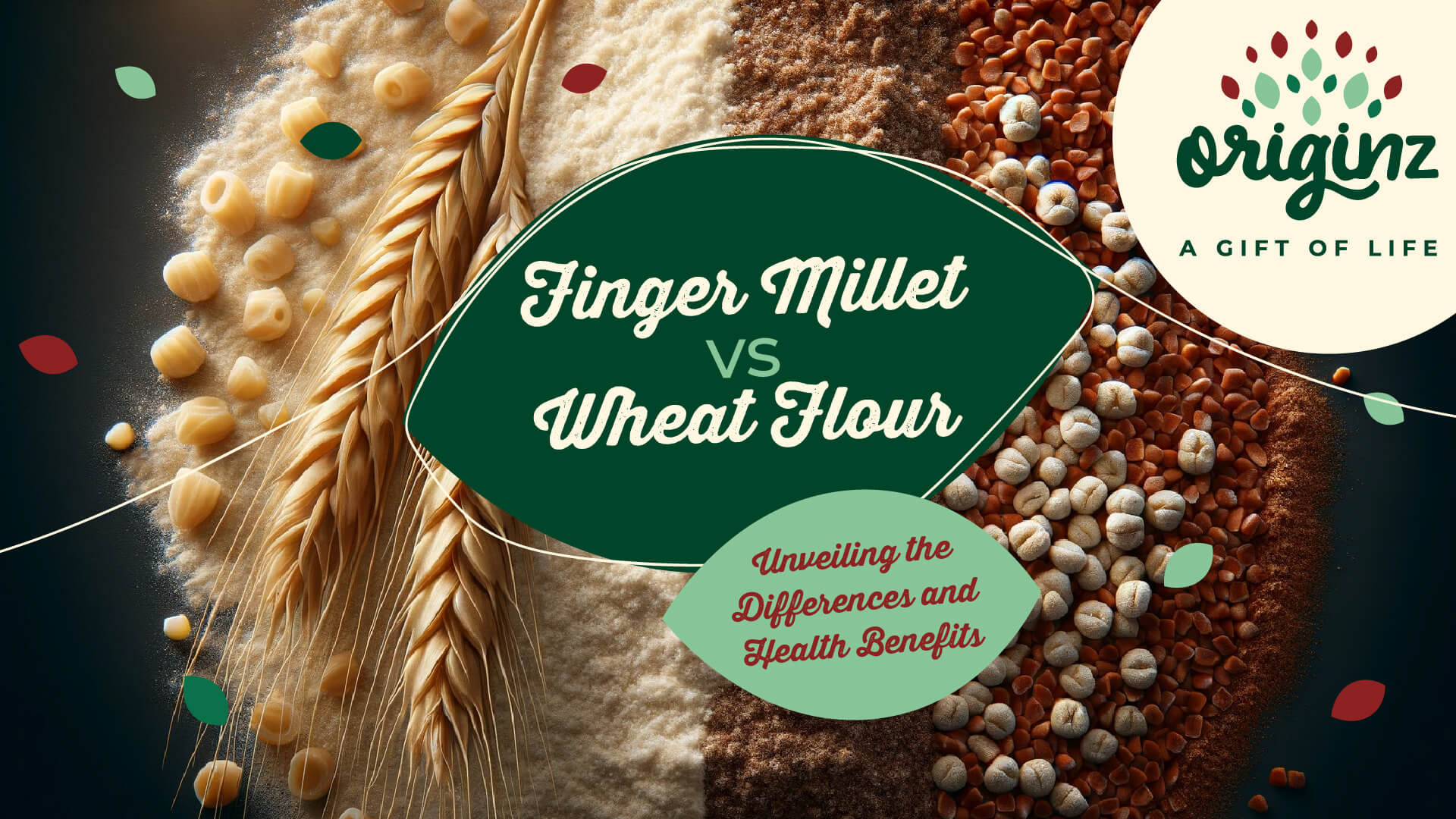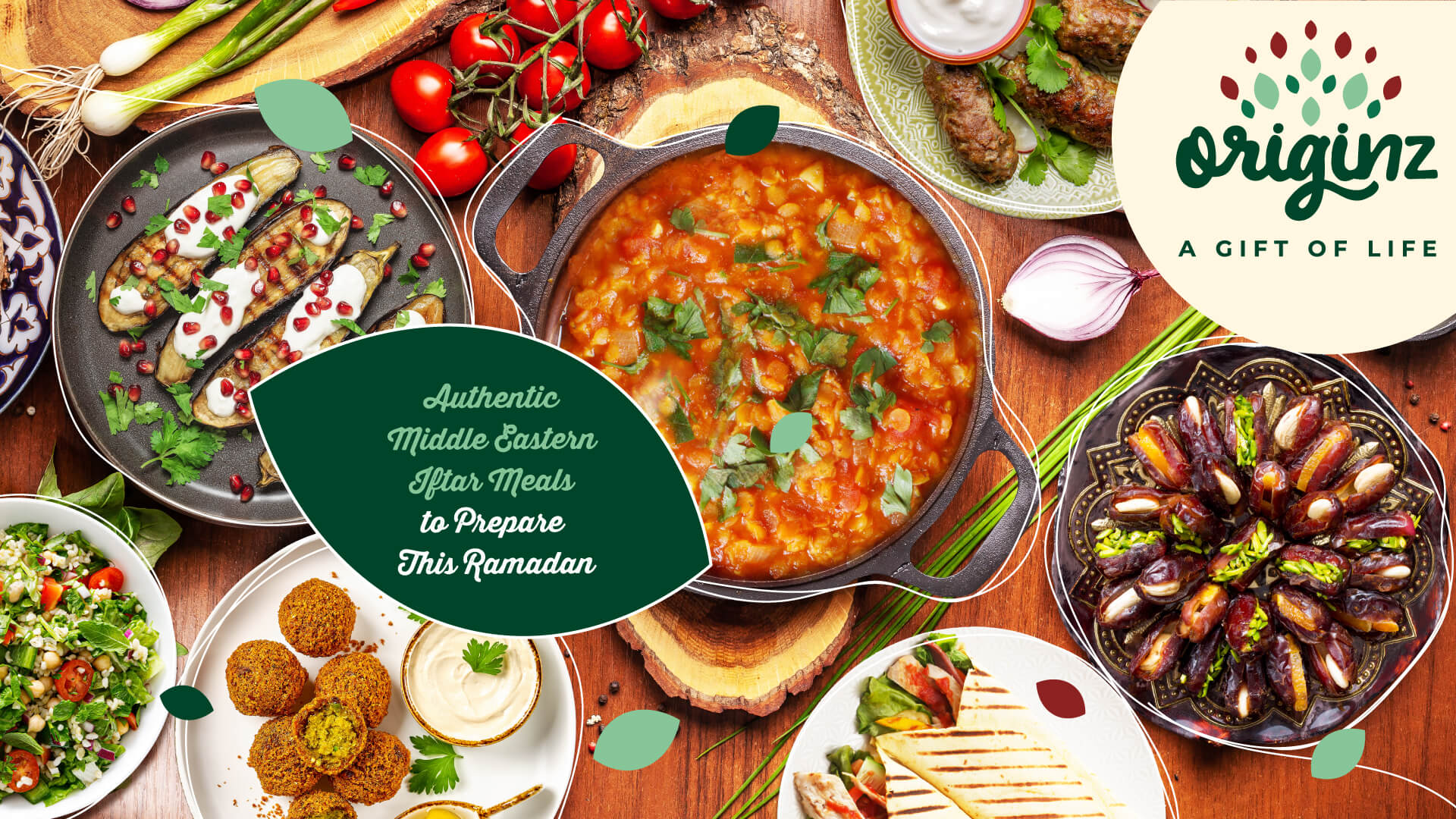
Finger Millet vs Wheat Flour:Differences and Health Benefits
Many people are focusing on their dietary choices in their search for a better lifestyle. Finger millet and wheat flour have developed as attractive alternatives, each with its nutrients and benefits. In this content piece, we'll look at the differences between finger millet and wheat flour, as well as their nutrient profiles and contributions to a healthy lifestyle. Let's take a look at these two healthy grains.
Finger Millet vs Wheat Flour: What Sets Them Apart?
Finger Millet
Finger millet, often called Ragi, is a gluten-free whole grain that has long been a staple in South Asian and African cuisines. It has an excellent nutritional profile and numerous health benefits. Here's a closer look at what distinguishes finger millet:
Nutrient-Rich:
Finger millet is high in nutrients such as calcium, iron, dietary fibre, and vital amino acids. Because of these nutrients, it is a fantastic choice for improving bone health and preventing anaemia.
Gluten-Free:
For people who are gluten intolerant or have celiac disease, finger millet is an excellent substitute for wheat flour. It can be used to make gluten-free dishes like rotis, dosas, and porridge.
Low Glycemic Index:
Finger millet has a low glycemic index, which means it doesn't cause rapid spikes in blood sugar levels. This makes it a smart choice for managing diabetes and maintaining steady energy levels throughout the day.
Finger Millet Uses:
Finger millet, including flour, flakes, and whole grains, is a versatile component that may be used in both sweet and savoury meals.
Finger Millet Benefits:
Regular consumption of finger millet is associated with improved digestion, weight management, and reduced risk of chronic diseases, making it a valuable addition to a healthy diet.
Wheat Flour
Wheat flour is a staple in most families, and it is mostly used to produce bread and baked items. While it is a mainstay in many diets, it is important to understand the nutrients in wheat flour, the benefits it provides, and how it differs from finger millet.
Rich in Carbohydrates:
Wheat flour is high in carbohydrates and provides a quick source of energy. However, this might cause sudden spikes in blood sugar levels, which may not be ideal for diabetics.
Protein Content:
Wheat flour contains more protein than finger millet, which is beneficial for muscle repair and growth.
Wheat Flour Uses:
Wheat flour is incredibly versatile and is used in a wide range of culinary creations, from bread and pasta to cookies and cakes.
Wheat Flour Benefits:
It is a quick and easy way to make a variety of baked items and other foods. It is important, however, to consume it in moderation and to use whole wheat flour for increased fibre and nutrients.
Tips for a Healthy Lifestyle
Apart from incorporating these essential ingredients into your diet, there are various other tips for a healthy lifestyle. These can come in handy for everyone:
Diversity is Key:
Incorporating a variety of grains like finger millet, wheat flour, and others into your diet ensures a broader spectrum of nutrients.
Balanced Diet:
Strive for a balanced diet that includes whole grains, fruits, vegetables, lean proteins, and healthy fats.
Portion Control:
Be mindful of portion sizes to prevent overeating and maintain a healthy weight.
Choose
Organic:
Organic foods, including flour and finger
millet, are often higher in nutrients than processed food because of the way
they are farmed. For more information about organic food, visit the Originz
website.
Stay Active:
To promote general well-being, combine a nutritious diet with frequent physical activity.
To wrap things up, the decision between finger millet vs wheat flour is mostly determined by personal dietary choices and health goals. Incorporating both grains into your diet will help you live a healthy lifestyle because they both have their own set of benefits. So, whether you choose the nutrient-dense finger millet or the adaptable wheat flour, remember that moderation and variety are essential for a well-balanced, healthy diet. Make educated decisions and enjoy the culinary journey to a healthier you.
FAQs
Is finger millet a good source of nutrients?
Yes, finger millet is packed with nutrients like calcium, iron, dietary fibre, and essential amino acids, making it an excellent choice for enhanced nutrition.
Which type of flour is best for Arabic food?
In Arabic food, wheat flower is much more popular than finger millet. Finger millet is most used in Asian and African cuisine, while wheat flour is popular in the Middle East. Many of the most commonly eaten types of Arabic bread use wheat flour as a base.Can I use wheat flour in a gluten-free diet?
No, wheat flour contains gluten and is unsuitable for a gluten-free diet. For gluten-free alternatives, consider finger millet or other gluten-free flour like almond or coconut flour.
How can I incorporate finger millet into my diet?
There are many ways to utilise finger millet, such as flour in baking, cereal, dosas, and savoury recipes. It's a flexible, nutritious and healthy food to include in your diet.
Is wheat flour a good choice for managing blood sugar levels?
Wheat flour's high carbohydrate content may cause fast blood sugar rises. If you're worried about your blood sugar, try finger millet, which has a lower glycemic index.
Further Read,
Latest Blogs

Maintaining Healthy Habits After Ramadan
Have Ramadan healthy meals after Ramadan and maintain healthy food habits and implement them in your daily lives. Read more about healthy food habits.

Authentic Middle Eastern Iftar Meals to Prepare This Ramadan
Prepare some authentic middle eastern iftar meals this Ramadan. Look for fresh Ramadan food ideas and make your day memorable with these dishes. Check them out.

Ramadan Dishes to Cure Fasting Fatigue
Don’t worry about fasting fatigue anymore as we have listed some best Ramadan dishes and easy iftar meals to support your fasting journey. Check them out.

Eid-al-Fitr Feast: Delicious Recipes to Celebrate the End of Ramadan
Celebrate the end of Ramadan with delicious recipes on the eve of Eid ul Fitr. Read more about the traditional Ramadan recipes and make them easily.